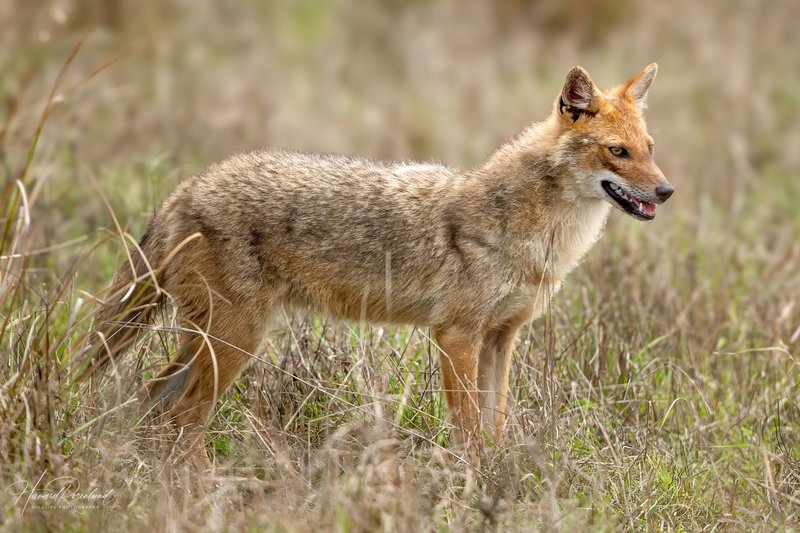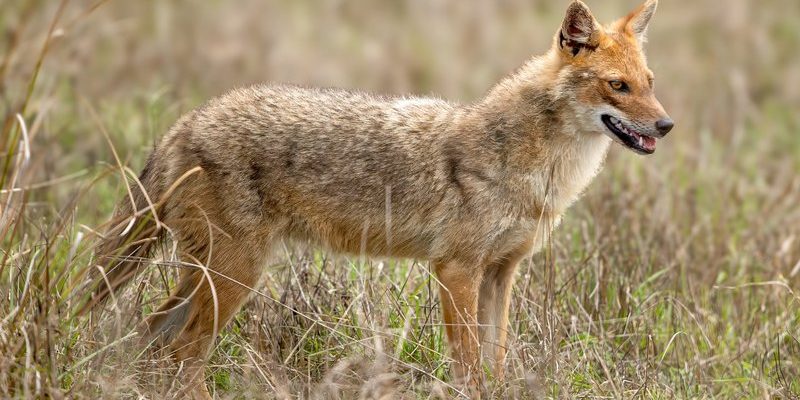
Golden jackals are often overlooked, but they are vital players in their ecosystems, serving as both hunters and scavengers. Understanding their role helps us appreciate the delicate balance of nature. When you consider how every creature, big or small, contributes to the environment, it’s pretty fascinating, right? So, grab your coffee, and let’s explore the golden jackal’s unique contributions!
What is a Golden Jackal?
Golden jackals (Canis aureus) are medium-sized mammals closely related to dogs and wolves. They have a striking golden-brown coat that glimmers in the sunlight, giving them their name. You might spot them roaming through grasslands, forests, and even urban areas across parts of Africa, the Middle East, and South Asia. These clever canines are highly adaptable, which is critical for survival in various habitats.
But what makes golden jackals particularly interesting is their behavior. They are opportunistic feeders, meaning they’ll eat just about anything available, from small mammals to fruits and insects. This flexible diet allows them to thrive in diverse environments. Honestly, this adaptability is a key reason why they can fit into so many ecosystems without causing major disruptions.
The Golden Jackal as a Predator
Here’s the thing: golden jackals are skilled hunters. They often work in pairs or small packs to hunt smaller prey such as rodents, rabbits, and birds. This group behavior allows them to be more effective than when they hunt alone. Imagine a team of friends coordinating a strategy to catch a delicious pizza!
By preying on these smaller animals, golden jackals help regulate populations. Without them, certain prey species could grow too numerous, leading to overgrazing and further imbalance in their habitats. This natural control system is essential for maintaining a healthy ecosystem. So, the next time you think about predators, don’t forget the humble golden jackal and its contributions to this delicate balance.
The Role of the Golden Jackal as a Scavenger
In addition to hunting, golden jackals are excellent scavengers. They’ll readily consume carrion—dead animals—left by other predators. This behavior might sound a bit gross, but it’s incredibly important! Think of them as nature’s cleanup crew, ensuring that decaying matter doesn’t linger and lead to the spread of disease.
By eating carrion, golden jackals also recycle nutrients back into the ecosystem. They help break down organic matter, which enriches the soil for plants. This nutrient cycling benefits entire ecosystems, promoting plant growth and supporting herbivores that rely on those plants. In a way, golden jackals play multiple roles—predators, scavengers, and recyclers all in one!
The Golden Jackal’s Impact on Biodiversity
Biodiversity refers to the variety of life in an ecosystem, and golden jackals help enhance this diversity. Their presence affects not only the species they directly interact with but also the whole community of organisms. When golden jackals hunt or scavenge, they influence the behaviors and populations of other animals.
For example, by controlling the populations of small mammals, these jackals indirectly support vegetation growth. When there’s less overgrazing, more plants thrive, providing habitat and food for various species. This chain reaction highlights the interconnectedness of life. It’s like a domino effect—one change can lead to multiple outcomes throughout the ecosystem.
Golden Jackals in Human-Centric Environments
You might be wondering, “What happens to golden jackals when they encounter humans?” Interestingly, they’ve adapted well to human-dominated landscapes. In some areas, they even move into urban environments. This adaptability can lead to conflicts, though, as they may scavenge from trash or prey on small pets.
Despite these challenges, golden jackals can also benefit humans. Their scavenging habits help manage waste in certain areas, reducing the risks associated with decaying animals. Communities can learn to coexist with these clever canines, finding ways to minimize conflict while respecting their role in the ecosystem.
Conservation and the Future of the Golden Jackal
As with many wildlife species, golden jackals face threats from habitat loss and human activities. Urban expansion, agricultural development, and hunting pose significant risks to their populations. It’s essential to understand their role in ecosystems, as losing them could lead to unforeseen consequences for the environment.
Conservation efforts play a crucial role in protecting golden jackals and their habitats. Creating wildlife corridors, public awareness campaigns, and policies to promote coexistence can help ensure their survival. By valuing the golden jackal and its contributions to biodiversity, we take meaningful steps toward preserving our planet’s health.
The golden jackal may not be the biggest or flashiest animal in the wild, but its role in the ecosystem is undeniably important. From hunting and scavenging to promoting biodiversity, this adaptable canine contributes to the balance of nature in profound ways. By understanding and respecting the golden jackal’s place in the world, we can promote conservation efforts and help ensure that these fascinating creatures continue to thrive.
So, the next time you think about wildlife, remember the golden jackal and its vital contributions to our ecosystems. They may not always be in the spotlight, but they are definitely a key player in the circle of life.

